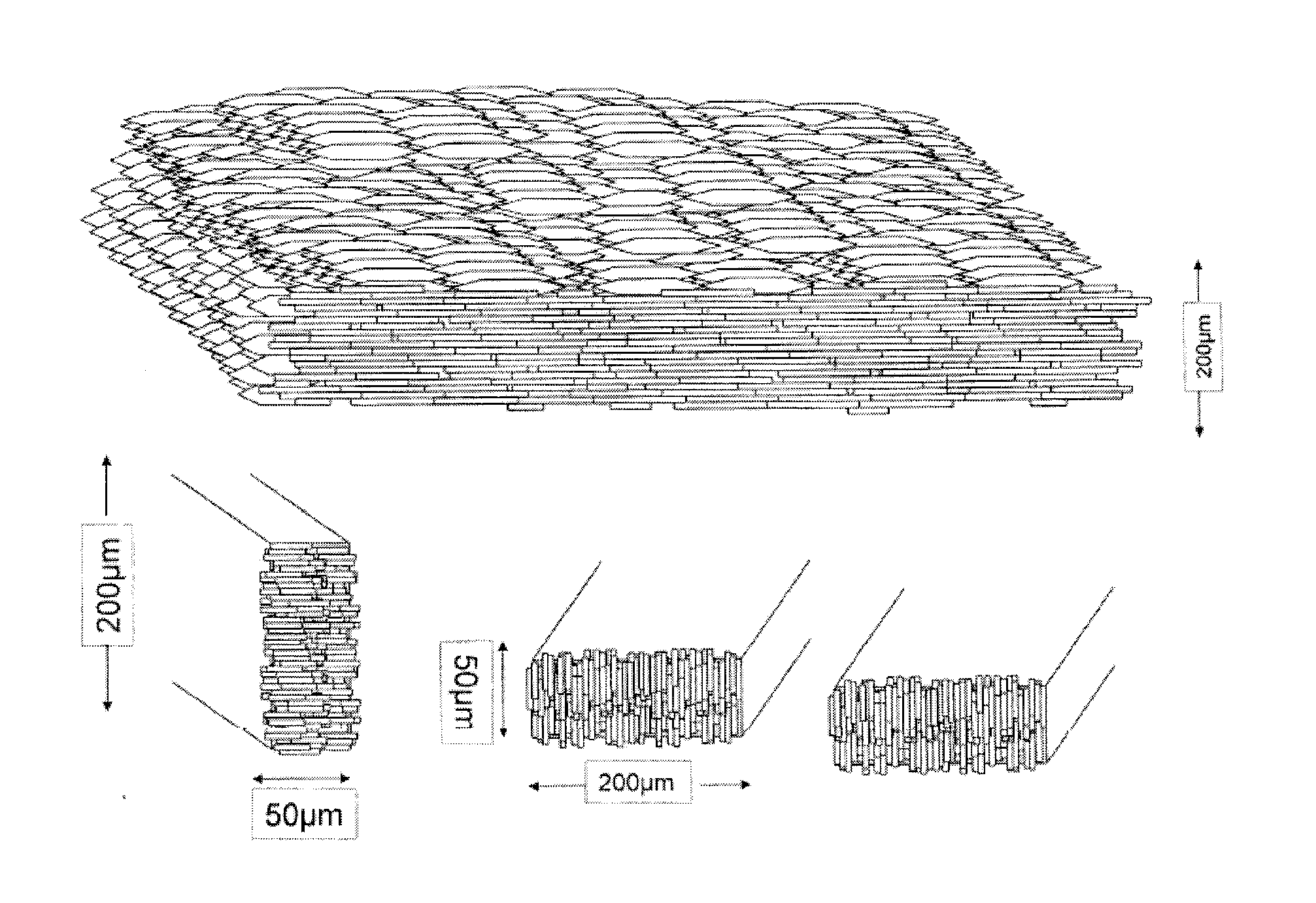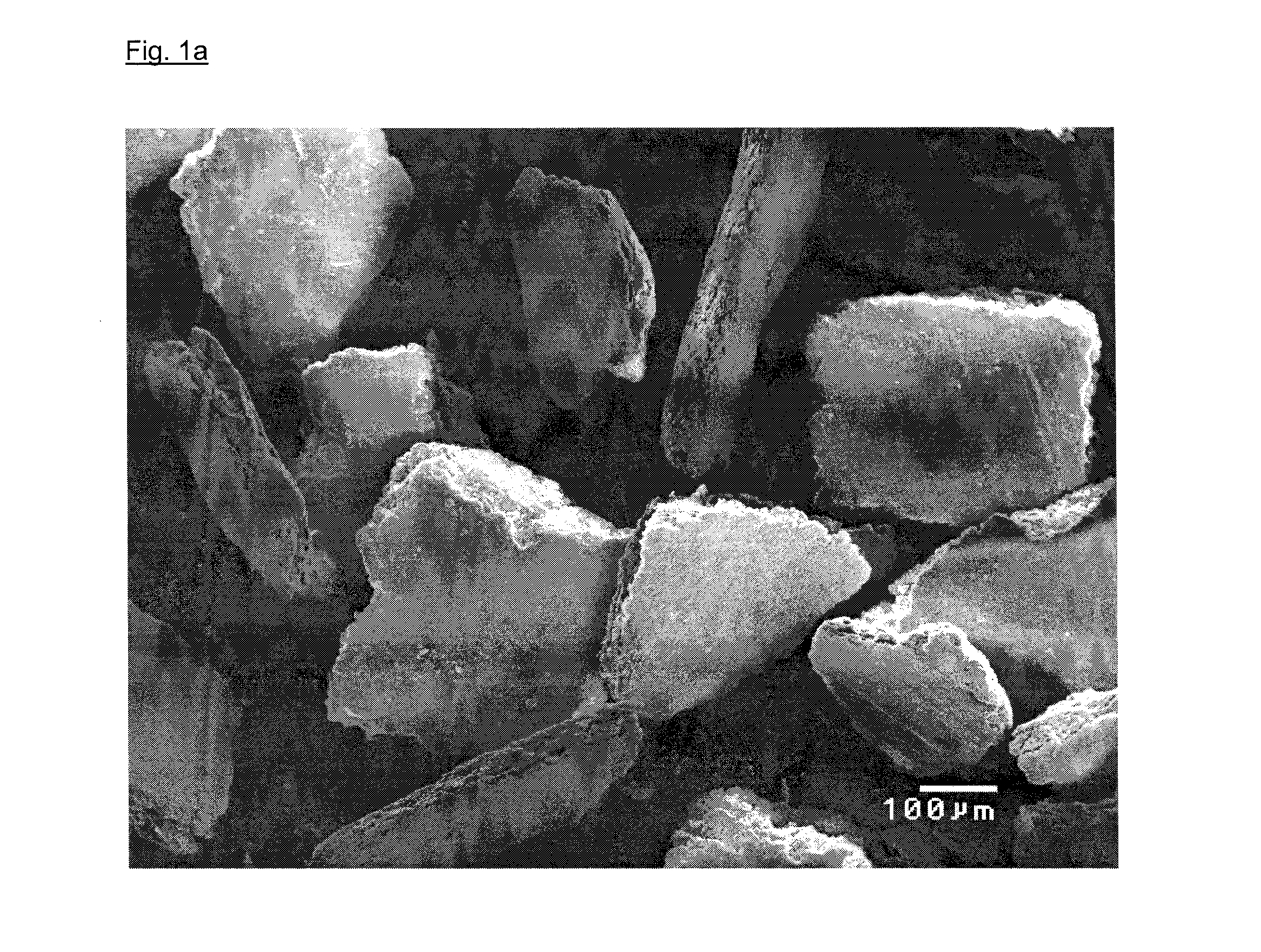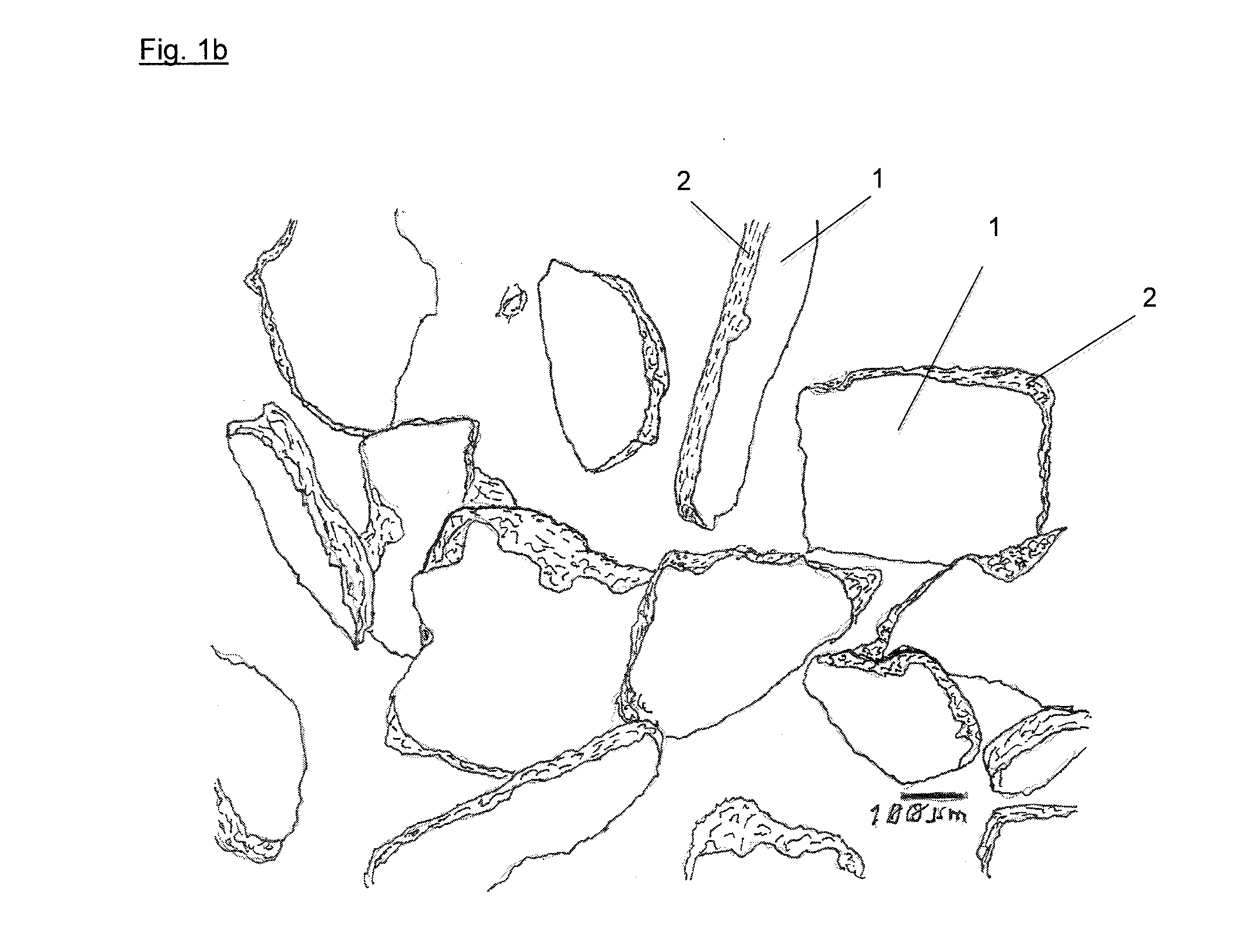Boron nitride agglomerates, method of production thereof and use thereof
a technology of boron nitride and agglomerates, which is applied in the field of boron nitride agglomerates, can solve the problems of high labor and cost, low density of aggregates, and high cost of subsequent process steps of special comminution of hot-pressed articles, and achieves the effect of increasing through-plane thermal conductivity
- Summary
- Abstract
- Description
- Claims
- Application Information
AI Technical Summary
Benefits of technology
Problems solved by technology
Method used
Image
Examples
example 1
[0107]Hexagonal boron nitride powder with a primary particle size d50 of 3 μm (measured using Mastersizer 2000, Malvern, wet measurement; from ESK Ceramics GmbH & Co. KG, BORONID S1) is fed continuously by means of a vibratory chute between two silicon nitride rolls arranged without a gap. The roll width is 150 mm, roll diameter 13 cm. The rolls are rotated at 15 rev / min and are squeezed together with a force of 1.7 t. In this way the boron nitride powder is roll-compacted with a throughput of 4 kg / h.
[0108]The resultant material is granulated material in the form of flakes with a thickness of about 50 μm and a fines fraction of uncompacted starting material. The material obtained is then heat-treated at 1200° C. for 2 hours in a nitrogen atmosphere. The heat-treated flake-shaped agglomerates are broken by means of a sieve and sieving aid first to a size of less than 3 mm, then to less than 700 μm. Finally the resultant flake-shaped agglomerates are broken by sieving to a size smalle...
example 2
[0109]Hexagonal boron nitride powder with a primary particle size d50 of 3 μm is fed continuously by means of a vibratory chute and is roll-compacted with a throughput of 4 kg / h as in example 1.
[0110]The resultant material is granulated material in the form of flakes with a thickness of about 50 μm and a fines fraction of uncompacted starting material and it is then dedusted by sieving to 210 μm and >100 μm, in order to separate the fines fraction <100 μm of 5 wt. %.
example 3
[0111]Hexagonal boron nitride powder with a primary particle size d50 of 3 μm is fed continuously by means of a vibratory chute and is roll-compacted with a throughput of 4 kg / h as in example 1.
[0112]The resultant material is granulated material in the form of flakes with a thickness of about 50 μm and a fines fraction of uncompacted starting material and it is then dedusted by sieving to 210 μm and >100 μm, in order to separate the fines fraction <100 μm of 4 wt. %.
PUM
| Property | Measurement | Unit |
|---|---|---|
| density | aaaaa | aaaaa |
| density | aaaaa | aaaaa |
| density | aaaaa | aaaaa |
Abstract
Description
Claims
Application Information
 Login to View More
Login to View More - R&D
- Intellectual Property
- Life Sciences
- Materials
- Tech Scout
- Unparalleled Data Quality
- Higher Quality Content
- 60% Fewer Hallucinations
Browse by: Latest US Patents, China's latest patents, Technical Efficacy Thesaurus, Application Domain, Technology Topic, Popular Technical Reports.
© 2025 PatSnap. All rights reserved.Legal|Privacy policy|Modern Slavery Act Transparency Statement|Sitemap|About US| Contact US: help@patsnap.com



